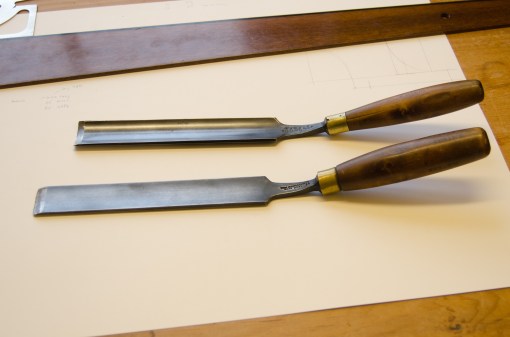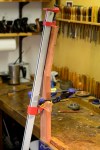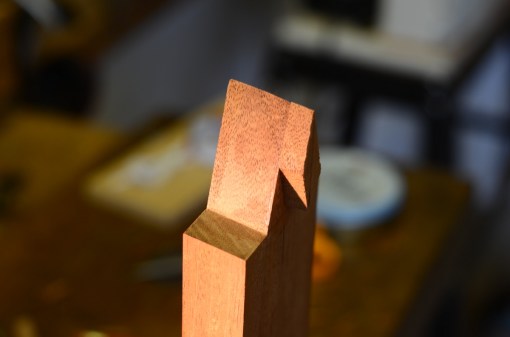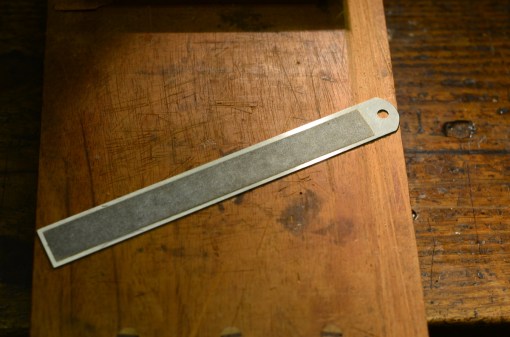Experienced guitar makers (and books about guitar making) always advise quarter-sawn spruce and vertical orientation of the growth rings for braces and harmonic bars. You hear the same if you ask a violin maker about selecting wood for the bass bar. They’ll explain that wood is stiffest in that orientation, which means that your soundboard will get maximum support for minimum weight.
That might seem the end of the matter but, if you’re one of those disagreeable people who can’t resist probing further and ask if they have ever measured the stiffness of wood in different grain orientations or, if they haven’t, how they can be so sure, you may hear the sound of feet shuffling and detect a swift change of subject.
In fact, as Liutiaio Mottala points out on his interesting website, considering the number of wooden structures that have been built over the years, the information available about how grain orientation influences the physical properties of strength and stiffness is remarkable sparse. In Chapter 4 of The Mechanical Properties of Wood, in USDA Forest Service, Wood Handbook – Wood as an Engineering Material, (available here) there’s a short section on the subject starting on page 4-31, saying that properties of wood do vary slightly according to orientation of annual rings in some species. Disappointingly, it gives no information either about the size of the variation or about which species exhibit the variation. Mottola’s website mentions work done by David Hurd, who found no difference in stiffness between quartersawn and flatsawn wood for the samples he examined but, as far as I can discover, no details are available on line.
Using the rather primitive set-up shown below, I attempted some measurements myself. The wood is straight grained European spruce with around 14 growth rings to the inch. I sawed and planed 9 pieces, each around 35cms in length and between 7 and 8.5mm in width and depth. I used a shooting board to to make sure that each piece was as straight and as square in section as possible and that the growth rings were oriented more or less parallel to one face (and therefore more or less at right angles to the adjacent face).

Each bar was then clamped in a vice with about 22cms protruding horizontally. I then hung a weight of 2lbs, exactly 20cms away from the vice jaws and measured the resulting downward deflection 4 times for each piece, rotating it through 90° between each measurement.


I’ve summarised the measurements that I made in the table below. The deflections I’ve given are the mean of the 2 measurements for each bar in each orientation. As you can see, the way the growth rings were orientated made remarkably little difference to the magnitude of the measured deflection and there was no consistent tendency for the wood to be stiffer in either of the two orientations.

Now, I’m well aware of the many deficiencies in my experimental design. One of the most serious is that all my specimen bars were cut from the same board and it’s possible that other wood from other trees behaves differently. And of course both the way I prepared my specimen bars and the simple test rig meant that all sorts of errors could have influenced individual measurements. However, the consistency of the findings encouraged me to think that these errors can’t have been very large. If they had been, the size of the difference between quarter sawn and flat sawn deflections would have shown much more variation between different bars.
As a check that the sorts of results I was getting were plausible, I used simple beam theory (max deflection = Wl³ ⁄ 3EI )to calculate the size of deflection that might have been expected, using a value of 10 000 MPa for E, the elastic modulus of spruce. This worked out at 0.34 inches, which was close enough to the deflections that I was observing to reassure me that my simple set-up wasn’t completely inadequate for its purpose.
So what do I conclude? Well, probably nothing that would stand up in a court of law. But I’ve satisfied myself that that spruce cut on the quarter isn’t very different in stiffness from spruce that has been flat-sawn and that where wood of the size and sort used for bracing soundboards is concerned, it doesn’t matter much whether the growth rings are orientated vertically or horizontally. In future, when selecting wood for struts and braces I shall feel free to use either orientation, to make the best use of what I’ve got available.
As a postscript, I was interested to learn from Stewart Pollens’ book Stradivari (ISBN-13: 978-0521873048) that the Hill collection of 50 bass bars taken from violins and cellos of the first rank, including those attributed to Antonio Stradivari himself, contains 11 that are flat sawn (that is to say, the annual rings are orientated horizontally). Maybe instrument makers in 17th century Cremona made less of a fetish about the orientation of growth rings than we do today.





































































































































































